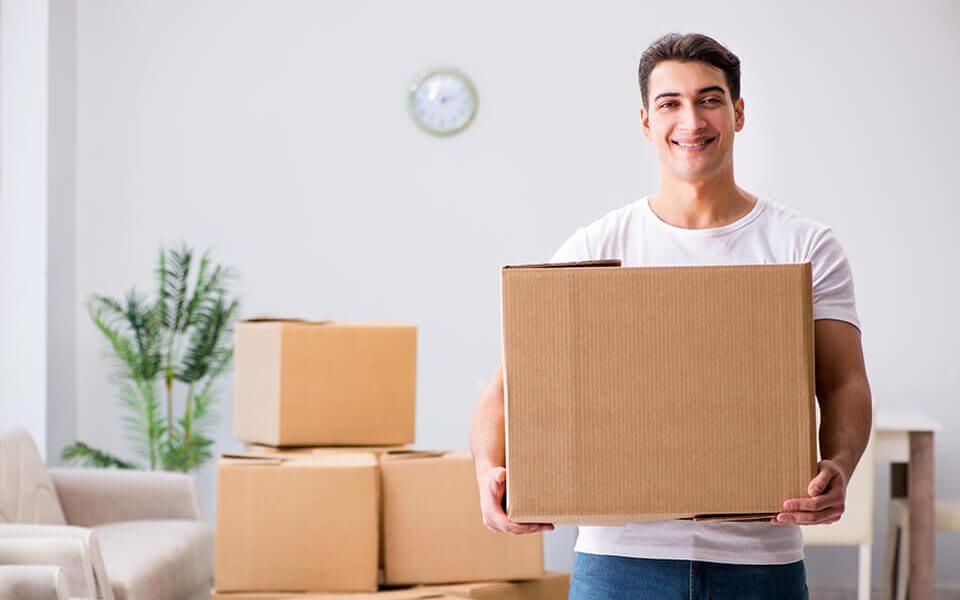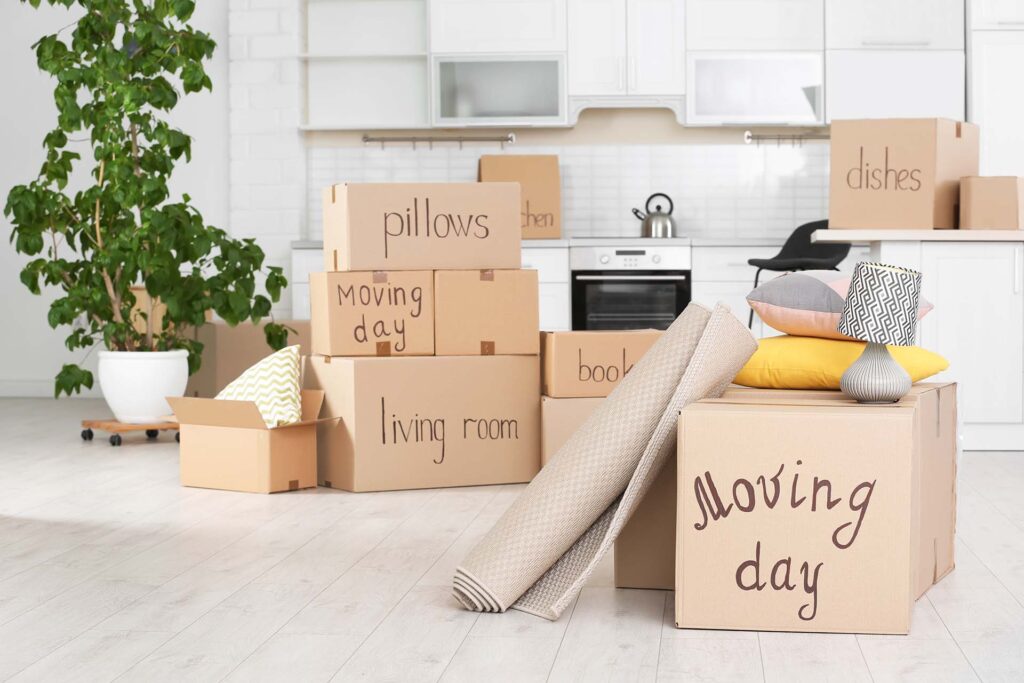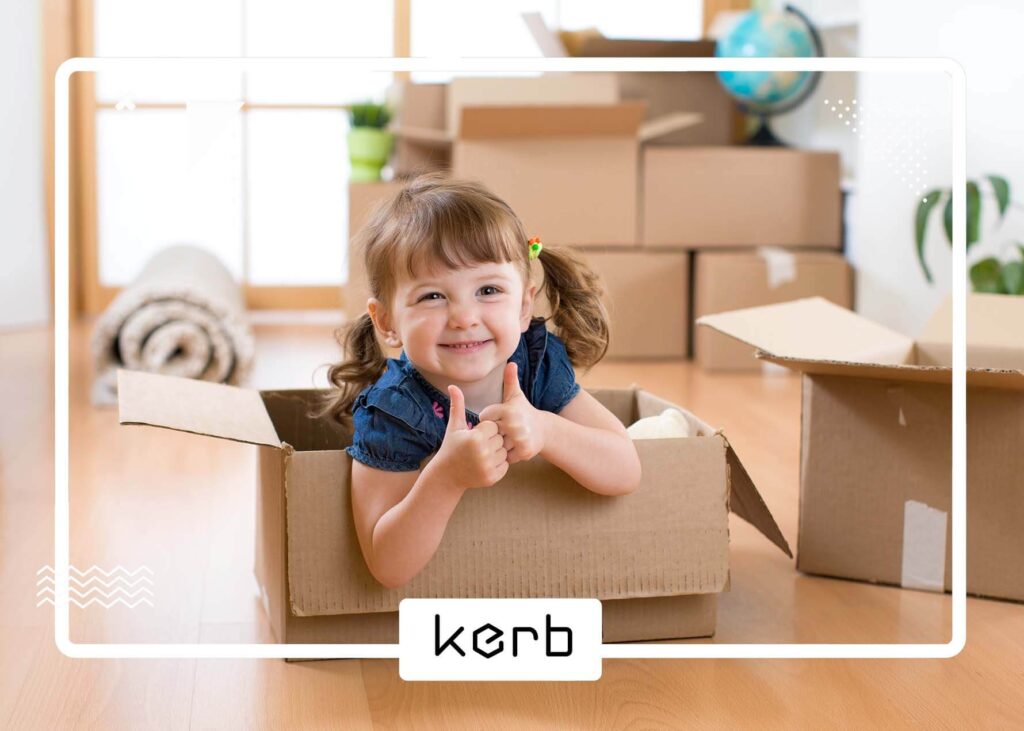Are you planning to relocate soon and are thinking about how to pack pots and pans properly? Whether your move is local or long-distance, packaging fragile is not an easy task. This is especially true when it comes to preparing items from your kitchen. And that is why we have decided to prepare the ultimate step-by-step guide on how to pack pots and pans for moving. Without further ado, let’s get started.

Packing Pots and Pans: The First Step Is to Get Organized
Packing pots and pans for interstate moving is one of the most challenging tasks, especially for those who are looking for tips on how to move out for the first time. If you’re relocating for the first time, you’ve probably wondered what is the best cooking surface for pots and pans. But packaging them is also a crucial question that’s undoubtedly going through your mind. If you want to avoid moving stress, you should make a moving to-do list and do a couple of steps before you start wrapping your cookware.
Remove Your Cookware From Storage Spaces and Declutter
Whether you’re relocating for the first time or not, you should go through your kitchen cabinets and decide what will be packed and transported to your new home. Maybe you’ve already gone through your list of things you need for your first apartment and bought new kitchenware without disposing of damaged ones. You indeed won’t throw away the ones that have sentimental value. For instance, if you’re moving for love, you won’t dispose of glassware from your wedding even if there are some chipped ones.
However, packing pots and pans means dealing with heavy objects that will take up a lot of space. And your moving expenses checklist will be thankful if you decide to transport less stuff. Remember that the more things you are relocating, the higher your relocation-related expenses will be.
Therefore, before you start wrapping and packaging, you should sort everything and decide which will be moved. If you’re in charge of the housekeeping, you have a good idea of what will be necessary for cooking meals at your new home. Throw away everything that’s chipped, scratched, has missing pieces, is worn out, or unused. On that pile should also go low-quality items you don’t even like. Bring only the ones that are of high-quality, practical, and in perfect condition.
Clean and Dry Your Cookware
The next step is very important. First, thoroughly clean your cookware. Otherwise, any grease trace will saturate the wrapping supplies, damage cardboard boxes, and stain other packed items. Then, you should make sure that everything is dried after cleaning. If your cookware is not perfectly dry, you’re risking mold growth. You don’t want unpleasant surprises, especially if you’re planning to use storage units for your items. You should do the cleaning 24 hours prior to packaging and leave your dishes on a drying rack during the night.
Make Sure You Have Enough Packaging Materials
There’s a list of most commonly forgotten things to pack, but people tend to forget to obtain enough packaging supplies and materials. And you’ll need a lot if you want your cookware to be transported undamaged to your new home. Here’s a list of packing materials for moving you need to prepare:
- Sturdy, medium-sized boxes,
- Packing paper for moving or newspapers,
- Bubble wrap,
- Dish towels, old clothing, and linen,
- Tape,
- Permanent markers.
If you’re on a tight relocation budget, you are perhaps wondering where to get free moving boxes. Finding free cardboards is among the crucial tips for moving out of state. You should visit your local bookstore, liquor store, and grocery shop and ask if they have some boxes they don’t need anymore. And we are guaranteeing you’ll find them. You can also find some at Craigslist and Freecycle.
Wrap Up Your Cooking Containers
While your cooking containers are sturdy kitchen pieces, they can be damaged easily when coming into direct contact with each other or with other sharp objects during transport. Even small dents and scratches could affect their performance and ruin them completely. That is why we highly recommend wrapping up all your cookware with bubble wrap or dish towels. That way, they will be protected during transport.

How Do You Transport Pots and Pans: Different Methods for Local and Long-Distance Moving
Whether you’re writing moving to another state checklist or are writing one for a local move, know that the packaging process is not the same. If you’re relocating locally, i.e., under 50 miles, you probably won’t book auto shipping and will transport your cookware in your own vehicle. In that case, you can substitute cardboards with garbage bags. On the other hand, if your move involves a trip longer than 400 miles, you should more carefully pack your dishes.
How to Pack Pots and Pans: Relocating Locally
Even though a sturdy medium-sized box is the best for packing pots and pans, you can use some garbage bags if you’re moving locally. Using a cardboard box can be a bit impractical and awkward when it comes to packaging your cookware. Thus, you can consider such a substitute. Just remember to use bubble wrap or dish towels to cover any sharp corners and handles. After wrapping, you can stack your cookware in one another. But is it OK to stack pots and pans? It is as long as you’ve provided enough protection. After you stack them, put them in garbage bags, and write a label so that you know what’s packed inside.
How Do You Pack a Frying Pan and Pots: Moving Long-Distance
If you’re moving long-distance or overseas, you want to be extra careful with your cookware and prevent any possible damage. Garbage bags definitely won’t be useful in this case, and you’ll need that sturdy cardboard box. During the long transportation hours, your cookware sets could scratch or break each other, and that is why double-protection with cushioning layers is needed.
Since you’ve cleaned and dried your cookware, prepared packaging materials, and wrapped them, you can start reading the following steps and prepare your cooking sets for transportation.

How to Pack Pots and Pans for Transportation: Step-by-Step Guide
When learning how to pack a moving truck, you’ll see that preparing large and heavy cardboards can lead to a disaster if they fall. That’s why we have mentioned preparing medium-sized ones for your dishes. When you were looking up how to pack fragile items and how to pack glasses for moving, you probably noticed that newspapers are a big no since they can leave stains. When it comes to packing pots and pans, newspapers can be used instead of paper for protection. You’ll also use tape to seal the box and a permanent marker for labeling. Let’s see some packing tips for moving cookware:
- Remember that these kitchenwares are extremely heavy and you’ll have to reinforce cardboards. Make sure they won’t collapse under so much weight. Your study cardboards should be strengthened with tape.
- Line cardboards and place some scrunched-up newsprint or bubble wrap on the bottoms. It will serve as cushioning and will keep from shifting during transportation.
- Your cookware can be packed in a space-efficient and convenient way when stacked together. For example, you can put a dish towel into the larger pot or pan and place smaller ones inside. Repeat the method for every cookware you decide to stack together. This method will prevent scratching each other and will maintain the level of their handles. The stacking should be finished by putting the lid to the smallest cooking container on top. The lid should be placed upside down.
- Now you should put your stacked cookware into cardboards and provide enough cushioning. You can add things like sponges, cloths, dish towels, and other soft kitchen items to fill in the gaps. All these cushioning options will prevent shifting during the move. Don’t forget to place the lids in the same cardboards as the cooking containers they belong to. You can use newspapers for wrapping the lids but be extra careful when covering glass lids.
- If you notice some empty spaces in your packed cardboard, you should add lightweight and smaller belongings. That way, you’ll optimize available space and keep your packed items secured and safe during the move.
- Keep in mind that overpacking should not be an option. If you put too many heavy belongings, the cardboard could collapse. Your cooking containers are already pretty heavy, and this is why you should stick with only lightweight ones for filling the gaps in the cardboard.
- The last step is taping and labeling. Seal the cardboards well, note what the content is clearly on labels, and don’t forget to write what side should be up. You should be more specific with the cardboard content label. Instead of just writing “pots and pans,” you could write, for example, “cast iron pan,” “casserole dishes,” etc. That way, you’ll know exactly what’s inside. In case you have some fragile packed, tape “fragile” label too and note necessary instructions in big and bold letters.
Take Extra Precautions With Glass Lids
As we have mentioned above, you should put lids in the same cardboard with cookware they belong to. Unpacking will be much easier, and you won’t lose any of them. Yet, you should be extra careful with glass lids since they could easily break. Bubble wrap is, for instance, a perfect packaging material that should be used in this case. You can use thicker towels or dish towels as well. Just remember to cover lids again with paper.

Take a Look at These Additional Packing Tips
If you’re relocating long-distance, you should consider packaging your cooking containers using a couple of additional moving tips. The following moving hacks will help if you lack packaging materials or don’t know how to stow larger dishes. Here are some bonus tips for nesting your cookware:
- We highly advise stacking your cookware in groups of three.
- To have better room efficiency, consider aligning all the handles.
- You can use pantry items, such as sealed spice containers and spice bags, for cushioning. Place them on the top cookware of the stack.
- In case you have a very valuable or especially vulnerable pan or pot, you should avoid stacking them together with other belongings. These should be packed in a separate cardboard box and with a lot of cushioning.
- You should always check if anything is flying around when you finish packaging the box. If so, be sure to add more padding and cushioning.

You’re All Set and Ready to Move
And we have come to the end of everything you should know about how to pack pots and pans. Moving interstate is not an easy task, and we hope that our step-by-step guide will come in handy as soon as you start organizing and planning. You just have to start in advance and follow every step of the process carefully.
If you want to have stress-free relocation, consider contacting reliable long-distance movers to help you out. There’s a list of items movers won’t move, but your cookware is not on it. Relocating with trustworthy cross country movers is more than convenient because you’ll have more time to focus on other important tasks related to your move. And if you’re relocating with pets or children, you’ll need all the help you can get. Worried about your budget and wondering how much do movers cost? Avoiding summer months and holidays for a relocation date is the cheapest way to move out of state. Remember that you have the option of paying for moving insurance for the most valuable and fragile cooking containers you own. If you choose to relocate with a long-distance moving company, you probably won’t need it, but better safe than sorry. And good luck!






